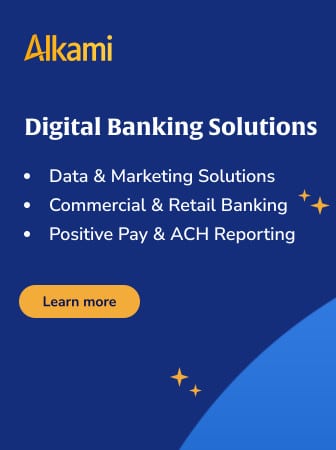In late January, a top executive at Sweden’s Klarna — at one time Europe’s most highly valued startup — told CNBC that the company, which has largely provided free-to-customer services to date, would begin charging U.S. customers $7.99 a month for a premier service called Klarna Plus. The move appears to be connected to Klarna’s plan to go public on a U.S. exchange later this year.
“The thing we need to prove to ourselves and to the market is that we can add a new kind of revenue stream to Klarna,” chief marketing officer David Sandstrom said. “That’s something that a lot of companies have struggled to do.”
Last fall, Bloomberg reported that Klarna’s rival Affirm was also considering a monthly subscription tier, although nothing has been announced and the company never confirmed the report.
Sandstrom’s comment highlights a situation that many financial companies face. In an environment where regulators are cracking down on fees — and the Federal Reserve is hiking interest rates — banks and credit unions seek ways to generate revenue outside of traditional channels like mortgages and loans. This has been one of the leading motivations behind fintech partnerships and open banking efforts.
At the same time, the idea of banks offering extra services for a fee is not new. For decades, before free checking accounts became the default, many banks would offer them as a paid service for customers willing to shell out. Today, some banks charge a monthly fee that allows customers to use other banks’ ATMs without paying a withdrawal fee.

Success Story — Driving Efficiency and Increasing Member Value
Discover how State Employees Credit Union maximized process efficiency, increased loan volumes, and enhanced member value by moving its indirect lending operations in-house with Origence.
Read More about Success Story — Driving Efficiency and Increasing Member Value

Improve Your Business Outcomes Through Data & Analytics
Gain centralized access to the credit bureaus and 20+ alternative data sources. Leverage advanced analytics to optimize marketing campaigns and loan decisions.
Read More about Improve Your Business Outcomes Through Data & Analytics
The Mississippi-based Renasant Bank, for example, has a “Rewards Extra” account that offers different kinds of insurance, shopping discounts and ATM fee refunds, among other services. It charges $6.50 a month.
Still, it is a marketing challenge to get customers to begin paying a company they’ve always thought of as free. Caitlin Sullivan, a marketing and design consultant, devoted a blog post to a bad experience she had with a client who had attempted this. “The users who had the service for longest were most irritated about the fee,” Sullivan wrote. “Their messages were angry — insulted, even — and said they’d never recommend the company again.”
Learn more:
- What Klarna’s Cratering Valuation Means for BNPL’s Future
- Johnny Cash to FIFA Video Game: One Bank Maximizes Sponsorship
- What Makes for a ‘Sticky’ Credit Card Rewards Program?
- How Banking Providers Can Tap Subscription Economy Revenue
Tips for Success With Fee-Based Services
Industry experts have the following pieces of advice for those considering charging for new, fee-based services.
Offer something that customers genuinely value. In Klarna’s case, the company isn’t forcing anyone to use Klarna Plus — it’s offering a premium service for its most active customers. The company argues that, for a certain kind of Klarna user, the monthly subscription fee might end up saving them money. For example, current Klarna users pay a service fee if they shop at retailers (such as Target) not within the Klarna network; Klarna Plus members will have the service fees waived.
“[Gen Z] want that financial fitness, not as a budget tool, but moving toward ‘do it with me’ or maybe even ‘do it for me’.”
— Danny Baker, Fiserv
This raises two questions for banks: Do you really know what your customers want, and can you deliver it to them?
In a 2023 report, Accenture argued that a “Banking Prime” account, similar to Amazon Prime, in which a menu of premium services could be offered to customers with a given level of assets, could catch on. Danny Baker, vice president of market strategy at Fiserv, suggests that “financial fitness” or “financial health” is a service that some customers may be willing to pay for.
“Some of it’s being driven by Gen Z’s desire for advice,” he said in an interview with The Financial Brand. “They want that financial fitness, not as a budget tool, but moving toward ‘do it with me’ or maybe even ‘do it for me’.”
Financial fitness is also of increasing interest to small businesses. Of course, providing effective guidance requires making use of customer data — and not all banks are expert at that.

Don’t be afraid to ask for help. There are lots of fintechs that can create add-on services that might be enticing to new and existing customers. Marcos Fernandez, managing partner at Fiat Ventures, has invested in StellarFi, a service that helps customers build credit and boost credit scores by paying everyday bills. “They can white label that solution so that banks, regionals and even other financial institutions can embed that technology,” he explains.
Make it work within your ecosystem. Baker stresses that banks should use any add-ons to deepen relationships with customers: “Ultimately you need to focus on relationships that will generate loans, right? That’s still where banks make all their money.” Fernandez recalls working at SoFi when the company was still primarily focused on refinancing student loans, but “the vision was always to become a full-service, digital bank.” The key to that expansion, he says, was offering products that were relevant to the “lifecycle of the customer journey.” That is, “If your deposits reach a certain level, there’s a high probability you are looking to buy a home. If you just had a child, a 529.”
Test and measure. Klarna introduced Klarna Plus in a pilot program in Utah last year. A company spokesperson says, “We were able to test the price point and received great feedback.” Sandstrom told CNBC that Klarna Plus is a “no brainer” for about 15% of the company’s heaviest users.
Fernandez recommends that banks take a similar approach: “Look and see what works and what doesn’t. And then if you do see an opportunity, it’s easier than ever to be able to offer those without having to build them in-house.”







